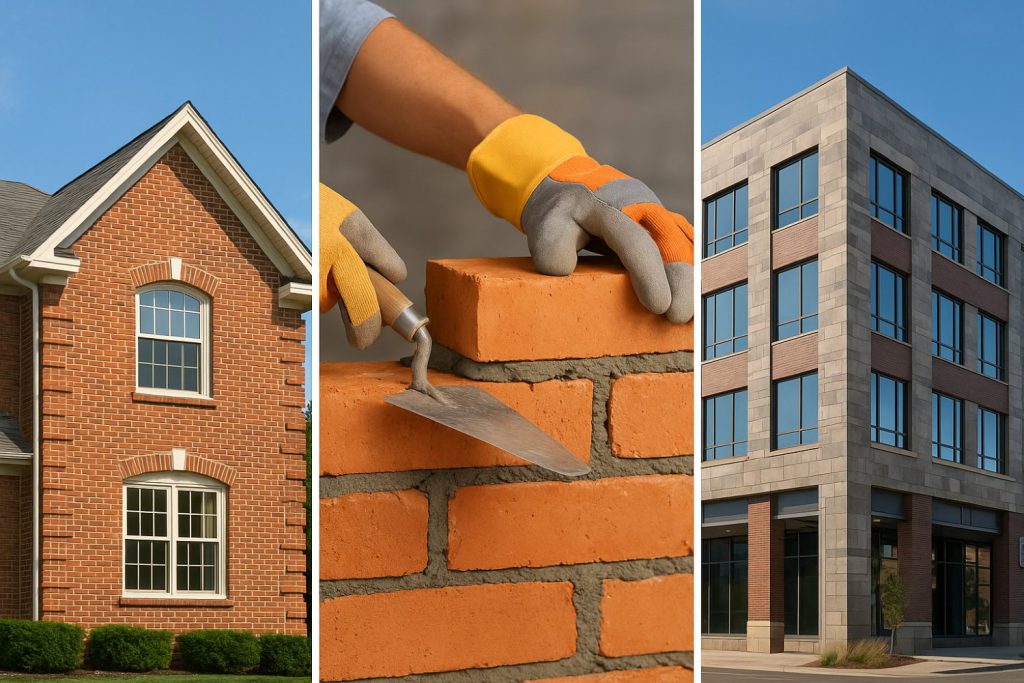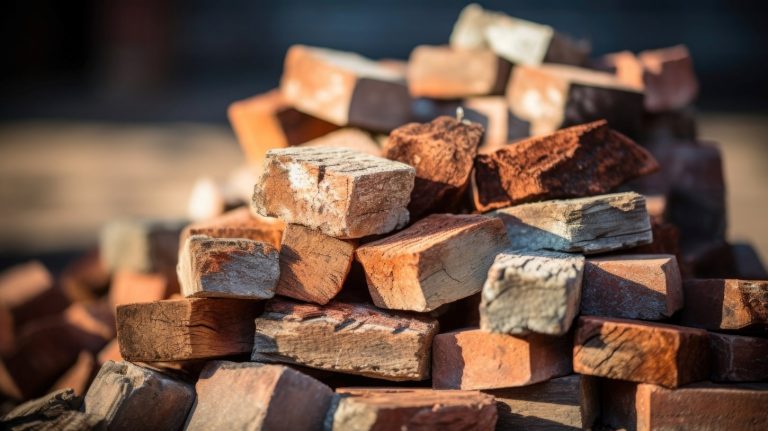From ancient temples to modern skyscrapers, brick and masonry have stood the test of time. These materials aren’t just relics of the past—they’re still among the most trusted and innovative choices in construction today. And looking forward, their relevance is only growing.
This article explores why brick and masonry continue to dominate in durability, sustainability, energy performance, and aesthetics—and why they’re poised to remain industry favorites for decades.
1. Unmatched Durability and Longevity
Brick and masonry buildings often last for centuries with minimal maintenance. Unlike wood or vinyl, these materials don’t rot, warp, or suffer from insect infestations. They’re resistant to weather extremes—from blazing heat to freezing cold.
Why This Matters:
- Lower repair and maintenance costs
- Long-lasting investment value
- Protection against natural disasters and decay
2. Superior Fire and Weather Resistance
One of the most praised qualities of masonry is its fire resistance. Brick doesn’t burn, and it offers a protective barrier that slows the spread of fire—making it a life-saving feature in residential and commercial construction.
Masonry also excels in withstanding hurricanes, high winds, and seismic activity, making it ideal for both coastal and inland regions.
3. Energy Efficiency Through Thermal Mass
Brick and masonry retain heat during the day and release it slowly at night, helping to stabilize indoor temperatures. This thermal mass property makes buildings naturally more energy efficient.
Key Benefits:
- Reduced heating and cooling costs
- Less reliance on HVAC systems
- Improved comfort in seasonal climates
4. Sustainability and Environmental Benefits
Modern brick and masonry products are made from abundant, natural materials like clay and stone. They require little processing, and many bricks are now made with recycled content or in energy-efficient kilns.
Why It’s Eco-Friendly:
- Minimal off-gassing or VOCs
- Recyclable and reusable materials
- Low embodied energy and carbon footprint
5. Timeless Beauty and Architectural Flexibility
No material offers the aesthetic variety and timeless charm of brick and stone. Whether it’s a sleek, modern facade or a traditional colonial look, masonry adapts to nearly any architectural style.
Plus, color, texture, and bond patterns can be customized for dramatic or subtle effects—making it ideal for architects and homeowners alike.
6. Low Maintenance and High Return on Investment
Brick doesn’t require painting, frequent cleaning, or sealing. Over time, it even gains character as it weathers naturally. This makes it a low-maintenance solution that continues to look great for decades.
Financial Advantages:
- High resale value
- Reduced insurance costs (due to fire resistance)
- Fewer long-term repairs or replacements
7. Modern Innovations in Masonry Technology
Today’s masonry isn’t stuck in the past. With cutting-edge techniques like prefabricated brick panels, advanced mortars, and structural masonry systems, builders can complete projects faster and more efficiently than ever.
Tools like BIM (Building Information Modeling) and CAD software also integrate easily with modern masonry design, increasing precision and reducing waste.
Frequently Asked Questions
Q: Is brick still relevant in modern construction?
A: Yes! Brick remains one of the most energy-efficient, durable, and stylish building materials used in both residential and commercial projects.
Q: Is masonry expensive compared to other options?
A: While the upfront cost may be higher, the long-term savings on maintenance, insurance, and energy make it a cost-effective solution.
Q: Can brick buildings be eco-friendly?
A: Absolutely. Many bricks are made from natural or recycled materials, and masonry construction supports energy-efficient design.
Q: What types of masonry are commonly used?
A: Brick masonry, stone masonry, concrete block masonry, and veneer systems are the most popular.
Q: How does masonry impact home resale value?
A: Homes with brick or stone exteriors typically have higher curb appeal and resale value due to their timeless look and proven performance.
Q: Are there modern styles of brick and masonry?
A: Yes! Modern bricks come in sleek profiles and contemporary colors, and many homes mix brick with glass, wood, or steel for a stylish hybrid look.
Conclusion: Built to Last, Designed for the Future
Brick and masonry are not only symbols of architectural heritage—they’re also smart, sustainable, and stylish solutions for the future. With unmatched performance in strength, safety, and sustainability, they will continue to be the building materials of choice for homeowners, builders, and architects alike.






